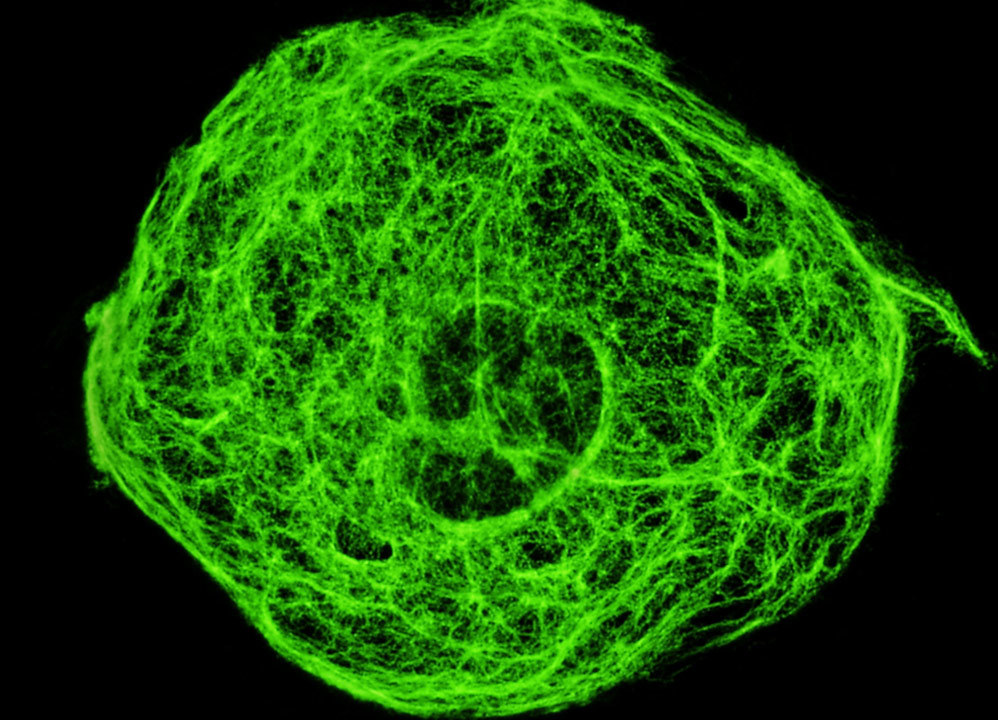
Rat Kangaroo Cell Intermediate Filaments with Fluorescein
YFP Bandpass Emission (Narrow Bandwidth Excitation) Blue-Green Set
Fluorescence emission intensity from a culture of rat kangaroo kidney (PtK2 line) epithelial cells that were immunofluorescently labeled with primary anti-vimentin (an intermediate filament protein) mouse monoclonal antibodies followed by goat anti-mouse Fab fragments conjugated to fluorescein (FITC). In addition, the specimen was simultaneously stained for DNA with the ultraviolet-absorbing probe DAPI, and for the intracellular mitochondrial network with MitoTracker Red CMXRos. Vimentins represent a class of water-insoluble proteins, along with desmin, glial fibrillary acidic protein (GFAP), and peripherin, which form intermediate filaments and help to mechanically stabilize the cell. The visible light absorption maximum of fluorescein is 490 nanometers and the emission maximum occurs at 525 nanometers, values that fall within the useful range of the Nikon YFP HYQ filter combination. Note the high level of green fluorescence intensity observed from the fluorescein-labeled vimentin intermediate filament network that extends throughout the cytoplasm, but an absence of signal from the blue and red fluorophores (DAPI and MitoTracker) targeting the nuclei and mitochondria, respectively.













